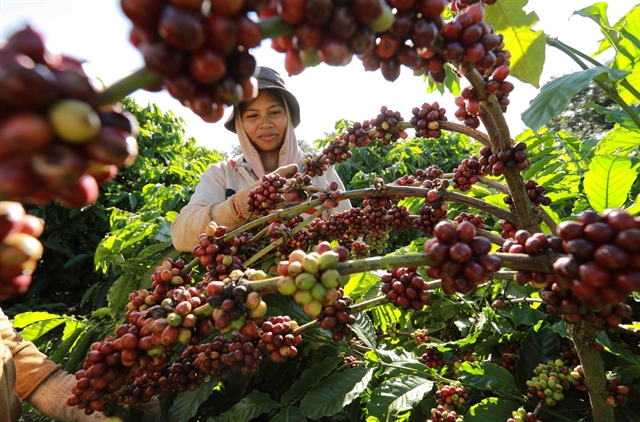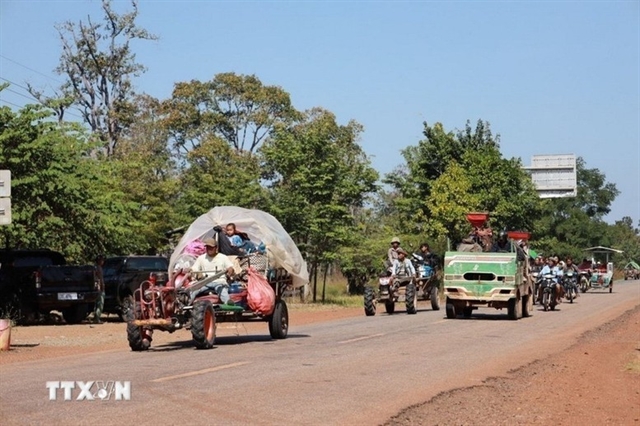 Economy
Economy

 |
| A farmer harvests coffee. Việt Nam's coffee export could reach $4 billion this year. — VNA/VNS Photo Vũ Sinh |
HÀ NỘI — Global and domestic coffee prices are at high levels, providing opportunities for Việt Nam to maintain a coffee export revenue of over US$4 billion this year, a record set in 2022, while the global supply is narrowing down.
According to Mercantile Exchange of Việt Nam (MXV), Robusta averaged $2,564 per tonne as of April 24 on ICE Futures Europe, which increased by nearly 40 per cent compared to the beginning of this year.
Starting from early 2023, the market saw signals about the narrowing of supplies in major coffee-producing countries.
Statistics from the Việt Nam General Department of Customs showed that Việt Nam’s coffee export totalled more than 634,000 tonnes from the beginning of this year to April 15, lower than the result of 663,816 tonnes of the same period last year.
The drop in export volume occurred in the context that global coffee prices were at a high level, pushing up domestic prices to around VNĐ52,000 per kg, a record high, according to giacaphe.com.
Besides, the coffee output of Indonesia, the world's third largest Robusta producer, is forecast to be at around nine million tonnes, the lowest in the past decade, according to Volcafe. The Brazil National Supply Company forecast Robusta output of this country would drop by nearly 4 per cent compared to the 2022-23 harvest to 17.51 million bags.
These figures show that there is not only a shortage of coffee in the short term but also a narrowing in coffee supply in the medium and long term, which will likely push up coffee prices.
Phạm Quang Anh from MXV said that after a record coffee export year, Việt Nam’s coffee inventories were gradually shrinking. Along with that, the coffee output in 2022 dropped sharply by 10-15 per cent compared to the initial forecast due to heavy rain in the harvest period, which made the supply tight and price increase inevitable.
Currently, domestic coffee prices were at a high level compared to recent years, creating an opportunity for Việt Nam to maintain the export value of more than $4 billion in 2023.
Lower prices of Arabica than Robusta in the context of increasing concerns about global economic recession risks was an important factor for Việt Nam to promote the export of coffee.
It was an ideal condition for Việt Nam to increase the export of Robusta and affirm the position of being the world's largest Robusta supplier, Anh said.
Still, in the long term, Việt Nam’s coffee industry should aim for more sustainable export.
While coffee export was narrowing down, farmers in Tây Nguyên (Central Highlands) tended to cut down coffee trees to grow durian as China had allowed the official import of durian from Việt Nam.
Another problem was that Việt Nam mainly exported coffee in raw forms, which must be tackled to increase added value.
He urged enterprises to invest in production and processing to increase added value and develop brands for coffee products to meet the tastes of consumers in different markets. — VNS




